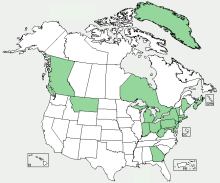Downy Birch
Information about properties also apply to many other birch species.
Botanical name: Betula pubescens
Family: Birch (Betulaceae)
Collectability: common, widespread, plentiful, good
Main benefit

 urinary system
urinary system
Use - overview













Features and Identification
Habitat
Type: woods, scrub
Distribution: throughout northern hemisphere
Prefers: damp
Other: pioneer
General
Growth type: tree
Cycle: deciduous
Height: up to 20 meters
Other: delicate
 Leaf
Leaf
Shape: heart
Texture: downy
Arrangement: alternate, often pairs
Edge: toothed
 Trunk
Trunk
Colour: rusty brown, later with white patches
Texture: papery, peeling
 Flower
Flower
Shape: catkins
Arrangement: male: hanging; female: erect
When: April to May
Other: with leaves
Colour:
Seed
Size: tiny
Type: woods, scrub
Distribution: throughout northern hemisphere
Prefers: damp
Other: pioneer
General
Growth type: tree
Cycle: deciduous
Height: up to 20 meters
Other: delicate
 Leaf
LeafShape: heart
Texture: downy
Arrangement: alternate, often pairs
Edge: toothed
 Trunk
TrunkColour: rusty brown, later with white patches
Texture: papery, peeling
 Flower
FlowerShape: catkins
Arrangement: male: hanging; female: erect
When: April to May
Other: with leaves
Colour:

Seed
Size: tiny
Distribution Map

When Available?
 April to July - best April and May
April to July - best April and May all year
all year early March
early March April and May
April and May August and September
August and SeptemberParts with black and white icons are for non-culinary use
Culinary Use
Flavour
Rating and Description:

 mildly balsamic
mildly balsamic

 watery, bland, astringent
watery, bland, astringent
How to Consume
 young: raw, tea; leaf curd
young: raw, tea; leaf curd
 raw, syrup, wine, vinegar
raw, syrup, wine, vinegar
 young: raw
young: raw
 cooked, flour
cooked, flour
Special preparation
 tea: 30-60g/litre, cool to 40° C, add a pinch of bicarbonate of soda to dissolve active principles, leave to infuse for a few hours
tea: 30-60g/litre, cool to 40° C, add a pinch of bicarbonate of soda to dissolve active principles, leave to infuse for a few hours
Nutrition
 starch
starch
Used as ...



 food
food
 tea
tea
 beverage
beverage
Rating and Description:

 mildly balsamic
mildly balsamic
 watery, bland, astringent
watery, bland, astringentHow to Consume
 young: raw, tea; leaf curd
young: raw, tea; leaf curd  raw, syrup, wine, vinegar
raw, syrup, wine, vinegar young: raw
young: raw cooked, flour
cooked, flourSpecial preparation
 tea: 30-60g/litre, cool to 40° C, add a pinch of bicarbonate of soda to dissolve active principles, leave to infuse for a few hours
tea: 30-60g/litre, cool to 40° C, add a pinch of bicarbonate of soda to dissolve active principles, leave to infuse for a few hoursNutrition
 starch
starchUsed as ...



 food
food tea
tea beverage
beverage
Medicinal Use
Action:

 (inner bark)
(inner bark) 

 astringent, diuretic, laxative
astringent, diuretic, laxative
 anti-rheumatic, bitter, diaphoretic, lithontripic
anti-rheumatic, bitter, diaphoretic, lithontripic
May treat:

 (inner bark)
(inner bark) 

 skin complaints
skin complaints

 gout, rheumatism, water retention, renal oedema, cystitis, dissolves kidney and bladder stones
gout, rheumatism, water retention, renal oedema, cystitis, dissolves kidney and bladder stones

 (inner bark)
(inner bark) 

 astringent, diuretic, laxative
astringent, diuretic, laxative  anti-rheumatic, bitter, diaphoretic, lithontripic
anti-rheumatic, bitter, diaphoretic, lithontripicMay treat:

 (inner bark)
(inner bark) 

 skin complaints
skin complaints
 gout, rheumatism, water retention, renal oedema, cystitis, dissolves kidney and bladder stones
gout, rheumatism, water retention, renal oedema, cystitis, dissolves kidney and bladder stones
Other Use
 trunk: timber; twigs: besom
trunk: timber; twigs: besom
Collection, Storing and Notes
Key
Plant parts:
 leaf
leaf
 stem or trunk
stem or trunk
 sap
sap
 root, bulb, tuber and other below ground parts
root, bulb, tuber and other below ground parts
 flower
flower
 fruit
fruit
 seed
seed
Parts with black and white icons in the availability section are for non-culinary use
Use:
 culinary use
culinary use
 medicinal use
medicinal use
 household use
household use
Other:
 caution
caution
 leaf
leaf stem or trunk
stem or trunk sap
sap root, bulb, tuber and other below ground parts
root, bulb, tuber and other below ground parts flower
flower fruit
fruit seed
seedParts with black and white icons in the availability section are for non-culinary use
Use:
 culinary use
culinary use medicinal use
medicinal use household use
household useOther:
 caution
caution
Glossary
Glossary of Medicinal Terms and Nutritive Substances
- anti-rheumatic: treats rheumatism
- astringent: causes localised contraction of blood vessels and tissue, reducing the flow of blood, mucus, diarrhoea etc.
- bitter: bitter-tasting; stimulates appetite, increases bile flow (essential for aiding the digestion of fat and neutralising stomach acid), regulates insulin and glycogen
- diaphoretic: promotes perspiration, aids the skin in elimination of toxins
- diuretic: increases secretion and elimination of urine
- laxative: evacuates the bowels or softens stools
- lithontripic: helps prevent and removes stones from kidneys, bladder etc.




